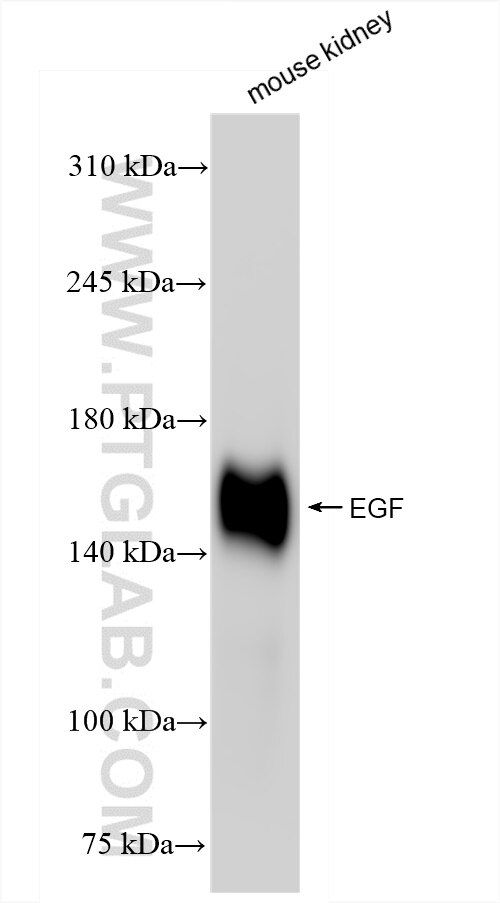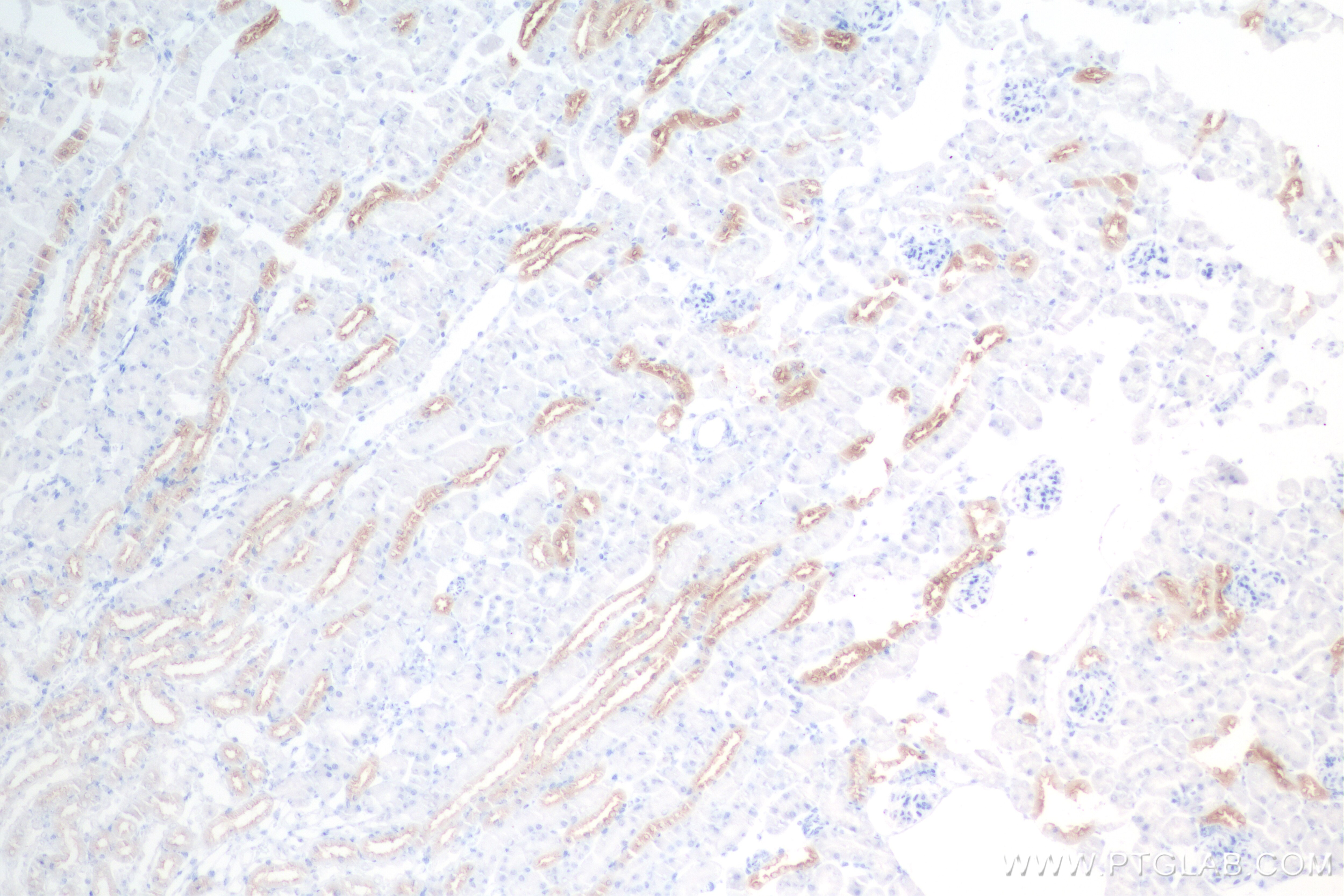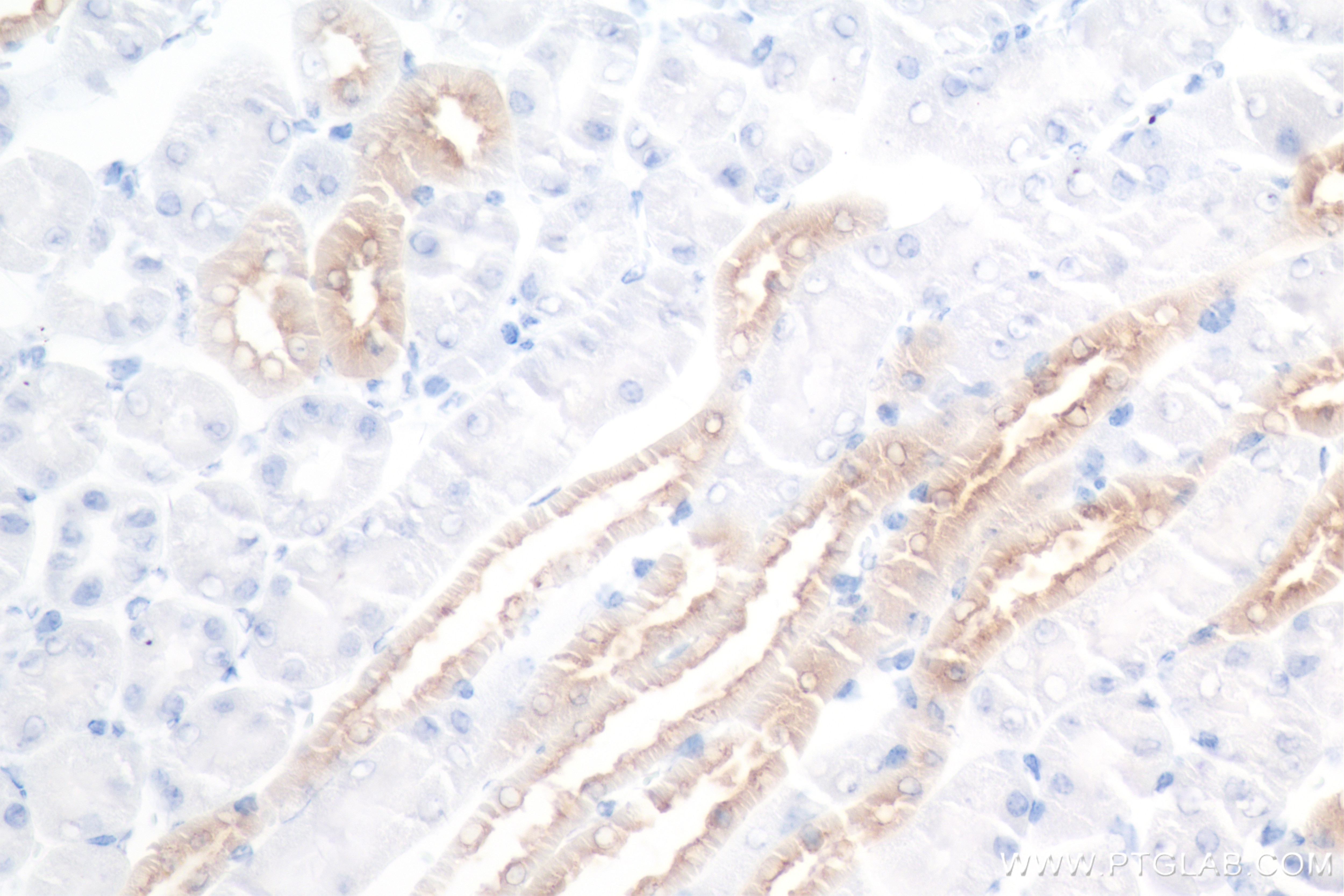Validation Data Gallery
Tested Applications
| Positive WB detected in | mouse kidney tissue |
| Positive IHC detected in | mouse kidney tissue Note: suggested antigen retrieval with TE buffer pH 9.0; (*) Alternatively, antigen retrieval may be performed with citrate buffer pH 6.0 |
Recommended dilution
| Application | Dilution |
|---|---|
| Western Blot (WB) | WB : 1:1000-1:4000 |
| Immunohistochemistry (IHC) | IHC : 1:50-1:500 |
| It is recommended that this reagent should be titrated in each testing system to obtain optimal results. | |
| Sample-dependent, Check data in validation data gallery. | |
Product Information
84601-1-RR targets EGF in WB, IHC, ELISA applications and shows reactivity with mouse samples.
| Tested Reactivity | mouse |
| Host / Isotype | Rabbit / IgG |
| Class | Recombinant |
| Type | Antibody |
| Immunogen | Recombinant protein 相同性解析による交差性が予測される生物種 |
| Full Name | epidermal growth factor |
| Calculated molecular weight | 133 kDa |
| Observed molecular weight | 150 kDa |
| GenBank accession number | NM_010113 |
| Gene Symbol | Egf |
| Gene ID (NCBI) | 13645 |
| Conjugate | Unconjugated |
| Form | Liquid |
| Purification Method | Protein A purification |
| UNIPROT ID | P01132 |
| Storage Buffer | PBS with 0.02% sodium azide and 50% glycerol , pH 7.3 |
| Storage Conditions | Store at -20°C. Stable for one year after shipment. Aliquoting is unnecessary for -20oC storage. |
Background Information
Epidermal Growth Factor (EGF) is a type of mitogenic factor that stimulates the proliferation of various cells, including epithelial cells and fibroblasts. It is a small peptide composed of 53 amino acids with a molecular weight of approximately 6,000 Daltons. EGF contains three disulfide bonds, which contribute to its stability under acidic and high-temperature conditions. Human EGF is synthesized as transmembrane precursor proteins (1207 amino acids), which are proteolytically cleaved to generate the 54 amino acid mature EGF. EGF plays a crucial role in regulating cell growth, proliferation, and differentiation. When EGF binds to its receptor (EGFR), it activates intracellular signaling pathways that lead to DNA synthesis and cell proliferation. EGF is naturally present in various tissues and body fluids, including saliva, urine, and milk. It is primarily synthesized in the submandibular glands and duodenum.
Protocols
| Product Specific Protocols | |
|---|---|
| WB protocol for EGF antibody 84601-1-RR | Download protocol |
| IHC protocol for EGF antibody 84601-1-RR | Download protocol |
| Standard Protocols | |
|---|---|
| Click here to view our Standard Protocols |


